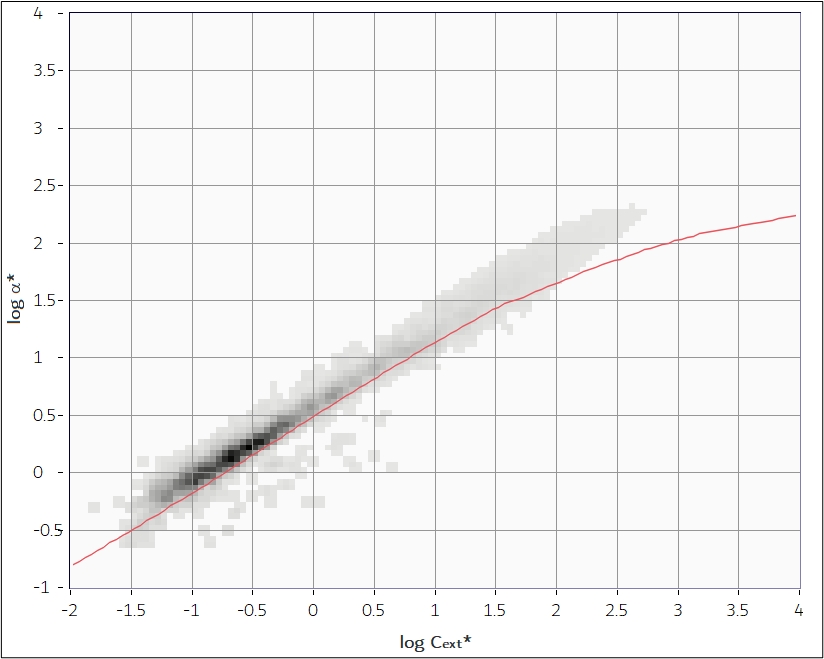[vc_row full_width_row=”true”][vc_column css=”.vc_custom_1469801256433{margin-top: -50px !important;}”][vc_column_text][maxmegamenu location=max_mega_menu_3][/vc_column_text][/vc_column][/vc_row][vc_row][vc_column animation=”fadeInRight”][vc_column_text]Powders and granules are essential raw materials and intermediates in the manufacture of a wide range of products across different industries, including food, agrochemicals and specialty chemicals. The characteristics of these materials can have a direct influence on their processability and hence on the quality and performance of the resulting product.[/vc_column_text][vc_column_text]Classizer™ ONE answers to the demanding request of a non invasive, continuous, trustable monitoring of powder suspension in fluids. Classizer™ ONE measures the particle size distribution, classifies the constituent material, and provides insights on the the particle aspect ratio of the powders, from product development through to manufacture and QC processes. Moreover, the single particle approach prevents from the use of complicate mathematical inversion methods, and immediately enables to measure non spherical sample with high polydispersity.[/vc_column_text][/vc_column][/vc_row][vc_row][vc_column width=”1/2″ animation=”fadeInRight”][vc_message message_box_style=”solid-icon” message_box_color=”blue” icon_type=”linecons” css_animation=”fadeInLeft” icon_linecons=”vc_li vc_li-bulb”]The case of quartz
Quartz is a mineral mainly represented by non spherical particles. Classizer™ ONE analysis showed a population appreciably broadened, located in a position non compatible to spherical particles. Retrieved estimates of calibrated mineral samples are in agreement with expected values. Thanks to EOS innovative techniques and proprietary algorithms, precise particles characterization is obtained also for powder with a shape as far as possible from an ideal sphere.

(in figure) EOS CLOUDS obtained from micrometric quartz dust particles. The solid red line corresponds to spherical particles with n=1.55. The difference is due to this specific sample which contains a mixture of oblate and prolate irregular particles. However the analysis is still possible even if the shape of the particles is not very well-defined or known. As in the previous case, the distribution extends along the vertical axis α* due to the non spherical aspect ratio of the particles. While the nominal value of the refractive index of the particles is around n=1.55±0.02, the population is shifted higher in the plane; a fit gives a considerably lower ‘effective’ value of n=1.46-1.47.
[/vc_message][/vc_column][vc_column width=”1/2″][vc_message message_box_style=”solid-icon” message_box_color=”blue” icon_type=”linecons” css_animation=”fadeInLeft” icon_linecons=”vc_li vc_li-bulb”]The case of kaolinite
Kaolinite is a mineral mainly represented by non spherical particles. Classizer™ ONE analysis of the powder suspension in water showed a population appreciably broadened, located in a position non compatible with spherical particles of the bulk material, as expected. Thanks to EOS innovative techniques and proprietary algorithms, precise particles characterization is obtained also for powder with a shape as far as possible from an ideal sphere.

(in figure) EOS CLOUDS obtained from micrometric kaolinite dust particles. The solid red line corresponds to spherical particles with n=1.55. The difference is due to this specific sample which contains a mixture of oblate and prolate irregular particles. However the analysis is still possible even if the shape of the particles is not very well-defined or known. As in the previous case, the distribution extends along the vertical axis α* due to the non spherical aspect ratio of the particles. While the nominal value of the refractive index of the particles is around n=1.55±0.02, the population is shifted higher in the plane; a fit gives a considerably lower ‘effective’ value of n=1.46-1.47.
[/vc_message][/vc_column][/vc_row][vc_row][vc_column][dt_button link=”https://www.eosinstruments.com/publications/” button_alignment=”center” animation=”fadeInDown” size=”big”]Find out more > EOS Application Note AN004 Addressing the Classification of Non Spherical Particles by Mean of the SPES Technology[/dt_button][/vc_column][/vc_row]
